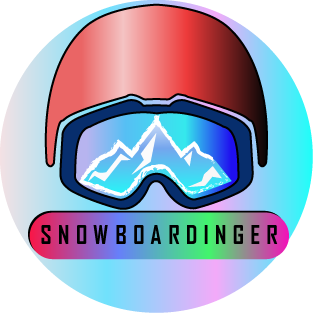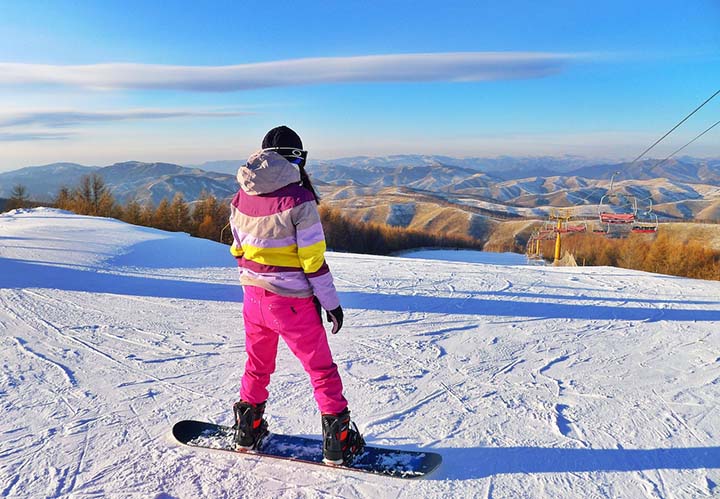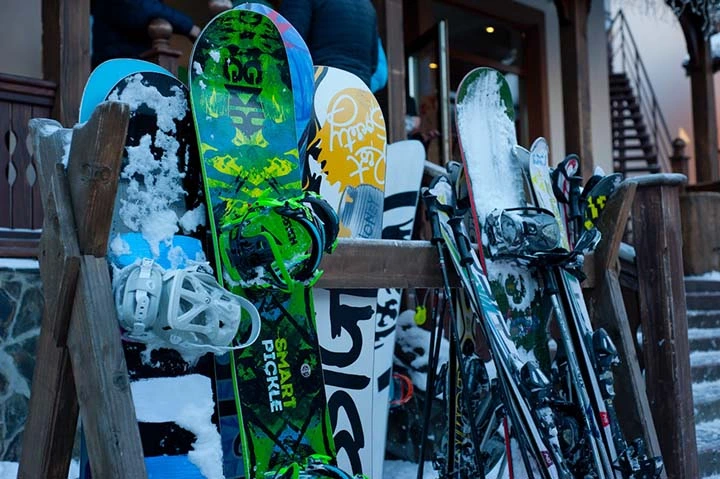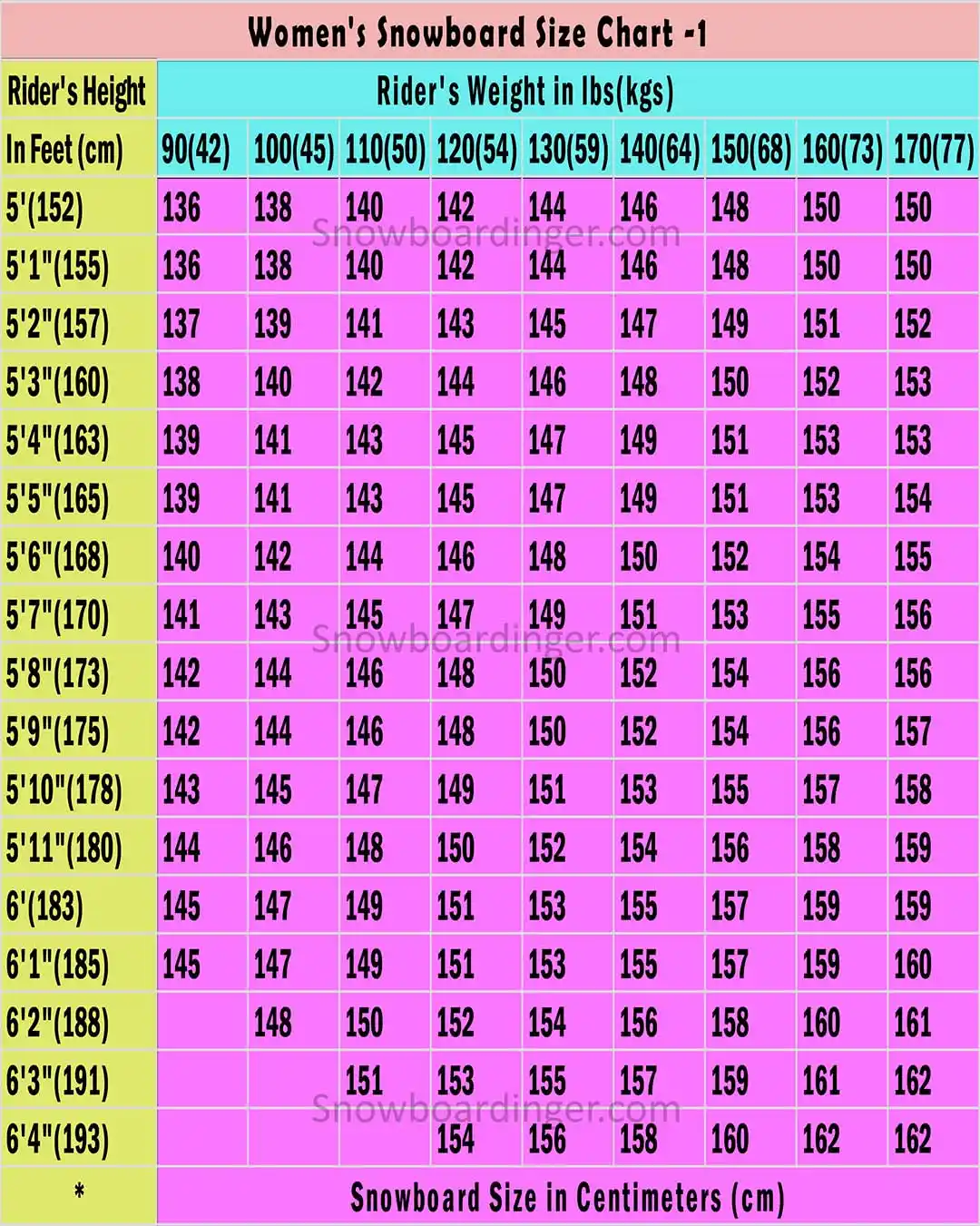Knowing how to stop on a snowboard is a crucial skill for snowboarders of all levels. Snowboarding is a thrilling and exhilarating winter sport that requires a good balance of speed, agility, and control, and knowing how to stop on a snowboard is essential for avoiding obstacles, controlling your speed, and ensuring your safety on the slopes.
In this blog post, we’ll explore how to stop on a snowboard by discussing the different methods, including the snow plow, heel drag, and carving. Whether you’re just starting out or looking to improve your snowboarding skills, we’ll provide step-by-step instructions and tips to help you master the art of “how to stop on a snowboard”. So, grab your snowboard and get ready to learn how to stop on a snowboard like a pro!
We will discuss the below points in detail to learn how to stop on a snowboard:
- Why knowing how to stop on a snowboard is important.
- Explanation of proper snowboard stance and how it affects stopping.
- Tips for maintaining balance on a snowboard.
- Three main methods to learn how to stop on a snowboard.
- Snow Plow
- Heel Drag
- Carving
- Conclusion.
Why knowing how to stop on a snowboard is important:
Safety:
Knowing how to stop quickly and effectively can help you avoid obstacles and potential hazards on the slopes, such as trees, rocks, or other snowboarders.
Control:
Being able to stop at will gives you greater control over your speed and movements on the slopes, allowing you to adjust your speed and direction as needed.
Confidence:
Having the ability to stop at any time increases your confidence while snowboarding, which can help you to enjoy the sport even more.
Skill development:
Mastering the different stopping techniques is a key component of becoming a better snowboarder and improving your overall skills.
Enjoyment:
Snowboarding is meant to be a fun and exciting sport, and being able to stop when you want to can enhance your overall enjoyment of the experience.
In short, knowing how to stop on a snowboard is a crucial skill for snowboarders of all levels, as it helps to ensure your safety, control, confidence, skill development, and enjoyment on the slopes.
Explanation of proper snowboard stance and how it affects stopping:
A proper snowboard stance can greatly impact your ability to stop on a snowboard. Your stance refers to the way you position your body on the snowboard and includes the position of your feet, legs, and upper body.
There are two main snowboard stances: the regular stance and the goofy stance. In a regular stance, your left foot is forward, while in a goofy stance, your right foot is forward.
When it comes to stopping, the direction you are facing and the position of your feet can play a significant role. For example, if you are in a regular stance and trying to stop using the snow plow method, you will be pointing your left foot towards the edge of the snowboard to create the “V” shape. If you are in a goofy stance, you will be pointing your right foot toward the edge of the snowboard.
Having a proper stance can help you to maintain balance and control while stopping on a snowboard. It can also make it easier to execute stopping techniques, as you will have better control over the direction and angle of your snowboard.
In conclusion, a proper snowboard stance is an important aspect of stopping on a snowboard and can greatly affect your ability to stop safely and effectively. It’s important to choose the stance that feels most comfortable and natural to you and to maintain proper form while stopping to ensure maximum control and stability.
Tips for maintaining balance on a snowboard:
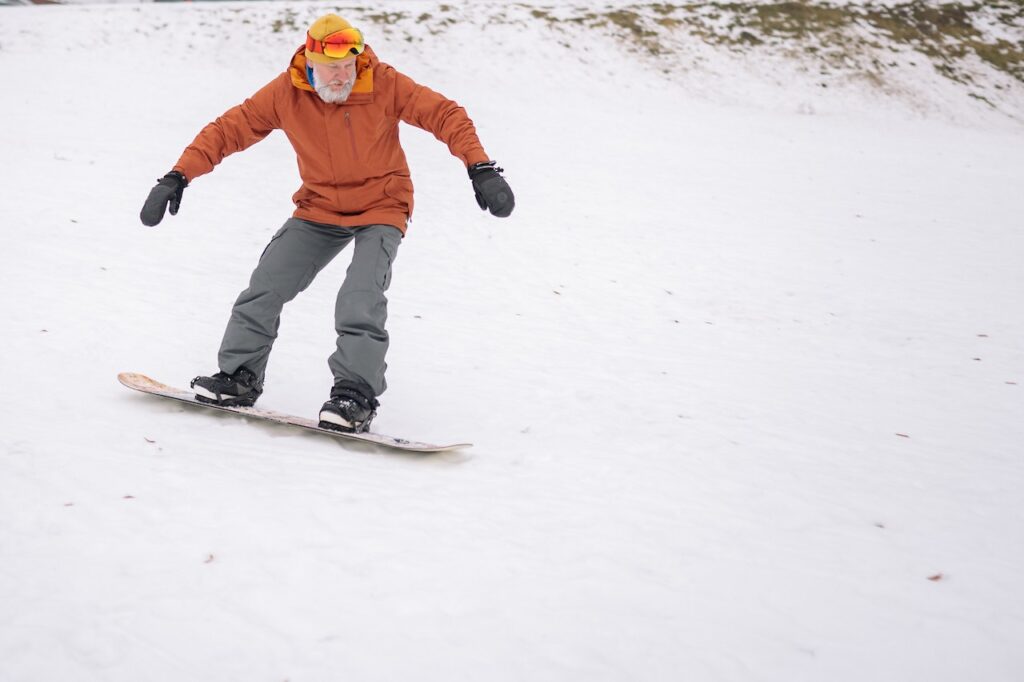
Maintaining balance is an essential aspect of snowboarding, and it’s crucial for both performance and safety. Here are some tips for maintaining balance while snowboarding:
Keep your weight centered:
Keep your weight evenly distributed over both feet, and avoid leaning too far forward or backward.
Keep your knees bent:
Keeping your knees bent will help you absorb any bumps or uneven terrain, and will also give you more control over the snowboard.
Look ahead:
Keep your eyes focused on where you want to go, not on your feet or the ground. This will help you maintain balance and stay aware of your surroundings.
Use your arms:
Moving your arms can help you maintain balance and stay centered. Keep them loose and use them to make subtle adjustments as needed.
Practice:
Balance is a skill that can be improved with practice. Start on a gentle slope and gradually progress to more challenging terrain as you improve.
Stay relaxed:
Tension in your muscles can make it harder to maintain balance. Stay relaxed, breathe deeply, and stay focused on your movements.
Use proper snowboard stance:
As mentioned earlier, having a proper snowboard stance can greatly affect your balance. Choose the stance that feels most comfortable and natural to you and maintain proper form while snowboarding.
By following these tips, you can improve your balance and become a more confident and skilled snowboarder. Remember to always start slowly and gradually progress as you get more comfortable and confident on the slopes.
Three methods to stop on a snowboard:
There are three main methods for stopping on a snowboard:
Snow Plow:
The snow plow is the most basic and commonly used stopping technique for snowboarders. It involves bringing your knees together and pointing your snowboard towards the edge, creating a “V” shape. This method creates friction between the snowboard and the snow, slowing you down and eventually stopping you.
Heel Drag:
The heel drag method involves dragging the heel edge of your snowboard in the snow, which creates friction and slows you down. This technique is more advanced than the snow plow and requires good balance and coordination.
Carving:
Carving involves making S-shaped turns on the slopes, which help to slow down and stop the snowboarder. This technique is the most advanced of the three, but it provides the most control and speed.
Each of these methods has its own advantages and disadvantages, and the best method for you will depend on your skill level, personal preference, and the conditions of the slopes. It is recommended to practice each method and determine which one works best for you.
Snow Plow Method:
The snow plow method is a simple and effective way for stopping on a snowboard. It is a beginner-friendly technique that is easy to learn and is suitable for riders of all skill levels. In this article, we will provide a detailed explanation of the snow plow method, including its benefits, how to execute the stop, and tips for making it more effective.
What is the Snow Plow Method?
The snow plow method is a technique for slowing down and stopping on a snowboard by using your snowboard’s edges to create friction and slow you down. To execute the snow plow stop, you turn the tips of your snowboard inward, creating a “V” shape that slows you down by creating friction between the snowboard and the snow.
Benefits of the Snow Plow Method
The snow plow method is an easy and effective way to stop on a snowboard, making it a great option for beginner riders or anyone looking to improve their stopping skills. Some of the benefits of the snow plow method include:
Easy to learn: The snow plow method is a beginner-friendly technique that is easy to learn, even for riders with little to no experience.
Versatile: The snow plow method can be used in a variety of snowboarding conditions, including flat terrain, uphill terrain, and even on steeper slopes.
Safe: The snow plow method is a safe way to stop on a snowboard, as it is less likely to cause a rider to lose their balance or fall.
How to Execute the Snow Plow Method
Here’s a step-by-step guide for executing the snow plow method:
Slow down: Begin by slowing down your speed to a comfortable level.
Bring your knees together: As you slow down, bring your knees together and bend them slightly. This will help you maintain balance and control.
Point your snowboard towards the edge: As you bring your knees together, point your snowboard towards the edge of the slope by turning your toes inwards. This will create a “V” shape with your snowboard and the snow, creating friction that will slow you down.
Keep your weight over your front foot: As you slow down, keep your weight over your front foot and maintain your balance by keeping your knees bent.
Increase the angle of the “V” shape to stop: As you slow down, you can increase the angle of the “V” shape to stop more quickly. The sharper the angle, the more friction you will create, and the quicker you will stop.
Stand up straight: Once you have stopped, stand up straight and get ready to continue your snowboarding.
Tips for Making the Snow Plow Method More Effective
Here are some tips for making the snow plow method more effective:
Keep your knees bent: Keeping your knees bent will help you maintain balance and control, making the stop more effective.
Keep your weight over your front foot: Maintaining your weight over your front foot will give you more control and make the stop more effective.
Increase the angle of the “V” shape gradually: Gradually increasing the angle of the “V” shape will help you control your speed and make the stop smoother and more effective.
Look where you want to go: Keep your eyes focused on where you want to go, and your body will naturally follow.
Practice, practice, practice: The more you practice the snow plow stop, the more comfortable and confident you will become, and the more effective
Heel Drag Method:
The heel drag method is a popular technique for stopping on a snowboard, and is commonly used by more advanced riders. In this article, we will provide a detailed explanation of the heel drag method, including its benefits, how to execute the stop, and tips for making it more effective.
What is the Heel Drag Method?
The heel drag method is a technique for slowing down and stopping on a snowboard by using the heel edge of your snowboard to create friction and slow you down. To execute the heel drag stop, you turn your heels towards the edge of the slope, causing the heel edge of your snowboard to drag against the snow, creating friction and slowing you down.
Benefits of the Heel Drag Method
The heel drag method is a more advanced technique that is typically used by more experienced riders, and it offers several benefits over the snow plow method, including:
Speed control: The heel drag method provides better control over your speed, allowing you to slow down more smoothly and precisely.
Increased control: The heel drag method provides more control over your direction, allowing you to stop and turn more easily.
Faster stopping: The heel drag method provides faster stopping power than the snow plow method, making it a great option for riders who need to stop quickly.
How to Execute the Heel Drag Method
Here’s a step-by-step guide for executing the heel drag method:
Slow down: Begin by slowing down your speed to a comfortable level.
Turn your heels towards the edge: As you slow down, turn your heels towards the edge of the slope, causing the heel edge of your snowboard to drag against the snow.
Keep your weight over your front foot: As you turn your heels, keep your weight over your front foot and maintain your balance by keeping your knees bent.
Drag your heels for more friction: As you slow down, you can drag your heels for more friction by turning your heels further towards the edge of the slope.
Stand up straight: Once you have stopped, stand up straight and get ready to continue your snowboarding.
Tips for Making the Heel Drag Method More Effective
Here are some tips for making the heel drag method more effective:
Keep your knees bent: Keeping your knees bent will help you maintain balance and control, making the stop more effective.
Keep your weight over your front foot: Maintaining your weight over your front foot will give you more control and make the stop more effective.
Drag your heels gradually: Gradually dragging your heels will help you control your speed and make the stop smoother and more effective.
Look where you want to go: Keep your eyes focused on where you want to go, and your body will naturally follow.
Practice, practice, practice: The more you practice the heel drag stop, the more comfortable and confident you will become, and the more effective the stop will become.
In conclusion, the heel drag method is a great option for more advanced riders looking to improve their stopping skills. It provides better speed control, increased control over your direction, and faster stopping power, making it a versatile and effective technique for snowboarding. So, if you’re looking to take your stopping skills to the next level, the heel drag method is a great place to start.
Carving:
The carving method is a technique for stopping on a snowboard that involves using the shape of your snowboard to create friction and slow you down. Unlike the snow plow and heel drag methods, which rely on the edge of the snowboard to create friction, the carving method uses the shape of the snowboard to create a controlled turn, which slows you down and stops you. In this article, we will provide a detailed explanation of the carving method, including its benefits, how to execute the stop, and tips for making it more effective.
What is the Carving Method?
The carving method is a technique for stopping on a snowboard that involves using the shape of your snowboard to create friction and slow you down. The technique involves making a series of controlled turns on the slope, which slows you down and stops you. Unlike the snow plow and heel drag methods, which rely on the edge of the snowboard to create friction, the carving method uses the shape of the snowboard to create a controlled turn, which slows you down and stops you.
Benefits of the Carving Method
The carving method offers several benefits over the snow plow and heel drag methods, including:
Speed control: The carving method provides better control over your speed, allowing you to slow down more smoothly and precisely.
Increased control: The carving method provides more control over your direction, allowing you to stop and turn more easily.
Faster stopping: The carving method provides faster stopping power than the snow plow and heel drag methods, making it a great option for riders who need to stop quickly.
How to Execute the Carving Method
Here’s a step-by-step guide for executing the carving method:
Slow down: Begin by slowing down your speed to a comfortable level.
Turn your snowboard: As you slow down, make a series of controlled turns on the slope, using the shape of your snowboard to create friction and slow you down.
Maintain your balance: As you turn, maintain your balance by keeping your knees bent and your weight over your front foot.
Keep turning: Keep making controlled turns until you have slowed down enough to stop.
Stand up straight: Once you have stopped, stand up straight and get ready to continue your snowboarding.
Tips for Making the Carving Method More Effective
Here are some tips for making the carving method more effective:
Keep your knees bent: Keeping your knees bent will help you maintain balance and control, making the stop more effective.
Keep your weight over your front foot: Maintaining your weight over your front foot will give you more control and make the stop more effective.
Make smooth, controlled turns: Making smooth, controlled turns will help you control your speed and make the stop smoother and more effective.
Look where you want to go: Keep your eyes focused on where you want to go, and your body will naturally follow.
Practice, practice, practice: The more you practice the carving method, the more comfortable and confident you will become, and the more effective the stop will become.
If you are interested to know how much does it cost to go snowboarding, you can read our post by clicking here.
Conclusion:
In conclusion, the carving method is a great option for riders looking to improve their stopping skills and take their snowboarding to the next level. It provides better speed control, increased control over your direction, and faster stopping power, making it a versatile and effective technique for snowboarding. So, if you’re looking to take your stopping skills to the next level, the carving method is a great place to start.
Stopping is a critical aspect of snowboarding, as it helps you maintain control and avoid accidents on the slopes. There are several methods for stopping on a snowboard, including the snow plow method, heel drag method, and carving method. Each method has its own advantages and disadvantages, and the best method for you will depend on your skill level, riding style, and the conditions of the slope.
Regardless of the method you choose, it’s important to practice your stopping techniques in a controlled environment, such as a beginner-friendly slope or a snowboarding park. Take your time to develop your skills and gain confidence in your ability to stop. Remember to keep your knees bent and your weight over your front foot. I hope you learn a great deal about how to stop on a snowboard after reading this post. Please share this post with your friend who are interested in learning how to stop on a snowboard.
